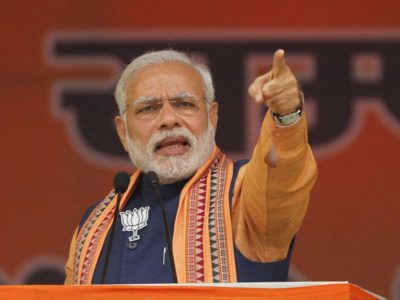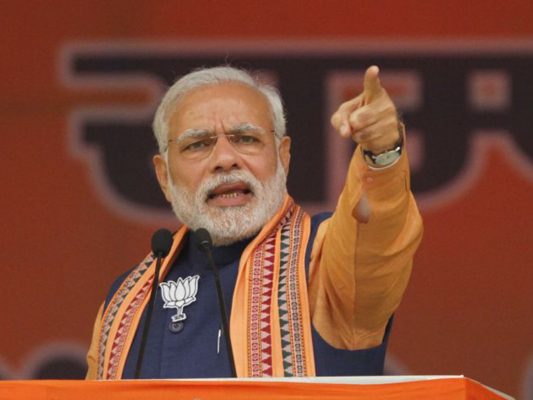OPINION
Why Modi may be winning: Economic performance alone is not enough to win or lose an election
In the best case scenario (painted by India Today-Axis) BJP not only gets a majority of its own, but the overall NDA seat count soars to a range of 339-365
By R Jaganathan – Times of India
May 22, 2019 – If the exit polls are any guide – and they can’t all be wrong – Narendra Modi is returning to power for five more years. The only question is whether BJP will roar back to power or merely squeak through. We probably will know the answer tomorrow.
While exit polls have a way of going notoriously wrong at times – last year’s Karnataka polls being one example – in the recently concluded Lok Sabha polls, the worst case scenario for NDA (painted by a NewsX-Neta poll) still gives it 242 seats and a decent shot at retaining power.
In the best case scenario (painted by India Today-Axis) BJP not only gets a majority of its own, but the overall NDA seat count soars to a range of 339-365.
If the top end of the range is achieved it would be a stupendous feat equalling the record of Indira Gandhi in 1971 and 1980, when she led her party to massive victories. A 42-44% share in the popular vote gave her party final seat-counts of 352 and 353. At the absolute top end of the Axis poll range, 365 seats, NDA would have a two-thirds majority in the Lok Sabha with a vote share close to 45 percent.
At the bottom end of the exit polls range (242 for NDA), one should still bet on an NDA government under Narendra Modi, for it requires only two regional parties to complete the majority count of 272. In the middle range, the NDA gets a comfortable majority on its own, and renewed legitimacy to govern India for five more years.
A few general conclusions can be drawn from the exit polls.
One, the existence of a visible and strong leader is a definite plus. Modi and Amit Shah drove home the point that a rag-tag bunch of opposition parties cannot deliver better than Modi, whatever his other shortcomings.
Two, economic performance, or non-performance, alone is not enough to win or lose an election. While Modi has legislated a lot of reforms that are important for the long run, in the short run, rural distress, paucity of good quality jobs and a far-from-perfect GST regime could not have endeared him to large sections of the voting masses and small businessmen. That they still voted for him means that he had that something extra that compensated for his perceived underperformance elsewhere.
Three, opportunistic alliances based on arithmetic alone may not always deliver the goods. While there is little reason to doubt that the Mayawati-Akhilesh Yadav mahagathbandhan did pose a formidable challenge to BJP in UP, that does not appear to be the case in Bihar, or Karnataka. Such alliances often prompt a counter-alliance of those left out, and the resulting polarisation based on caste or religion, or both, seems to have helped NDA in these crucial battleground states.
Four, coalitions that do not have a large national party at the core will often flounder, if only because there is no leader with the ability to take quick and decisive actions to hold disparate parties together. Consider how swiftly Amit Shah could stitch seat sharing deals with an estranged Shiv Sena and JD(U) when the mahagathbandhan of Mayawati and Akhilesh made the mistake of trying to edge Congress out of UP, and Mamata Banerjee could not bring herself to align with either Congress or the to keep BJP out of Bengal. Even Chandrababu Naidu, facing a huge challenge from YSR Congress, could not align with Congress.
Five, fake secularism is past its sell-by date. If the final results largely bear out what the exit polls are saying, the biggest losers in this election will be the Muslim minorities, who have been swayed by the so-called “secular parties” to vote en masse against BJP. This probably led to a huge counter-consolidation among Hindus in many states, including Bengal, thus leaving the minorities high and dry.
With all “secular” parties, from Congress to Trinamool, fighting hard to prove they are more Hindu than BJP, Muslims anyway got sidelined before the vote. They were essentially asked to pay a price for keeping BJP out, even while the “secular” parties were busy trying to woo the Hindu vote. Secularism means carrying all communities along, and not alienating or irritating the majority community just to send a dog whistle message to the minorities.
Six, the biggest criticism needs to be directed at the Lutyens’ elite, or the cabal which Modi colorfully referred to as the “Khan Market gang” in one of his interviews. From Day One, the old elite could not stomach the rise of the new emerging elite of 2014 led by Modi. The old Lutyens’ elite used every local tragedy (a lynching here, a Dalit murder there) to create a negative national and international narrative around BJP and Modi, but in the end it simply did not work. The people saw through it.
Conclusion:
Emerging consuming classes are driven by aspiration rather than…handouts.
The old elite have not realized that India is entering the middle income category of countries (around $2,000 per capita income), where newly emerging consuming classes are driven by aspiration rather than feudal-style handouts. These new consuming classes want to be recognized on their own terms, and not patronized by the old elite with promises of more freebies.
They are keen to lift themselves up by the bootstraps, and are happy if a government empowers them rather than reduce them to supplicants dependent on the state for doles. Modi talks their language. That’s probably why he is winning on May 23.







